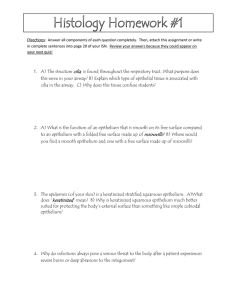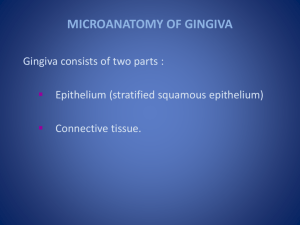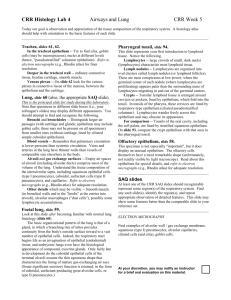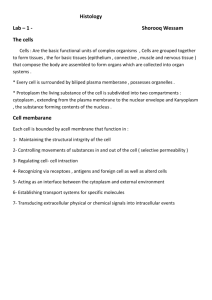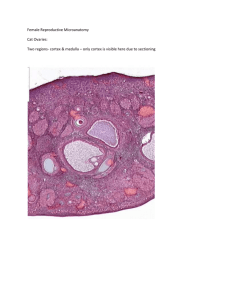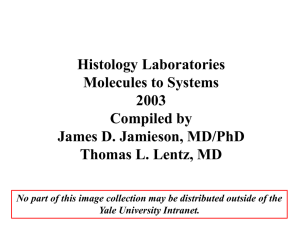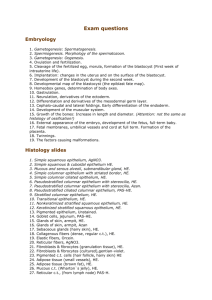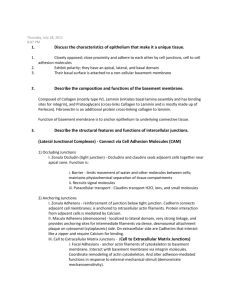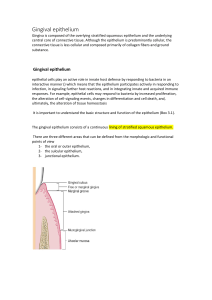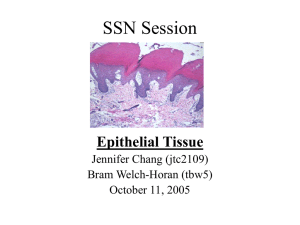Dentogingival junction
advertisement
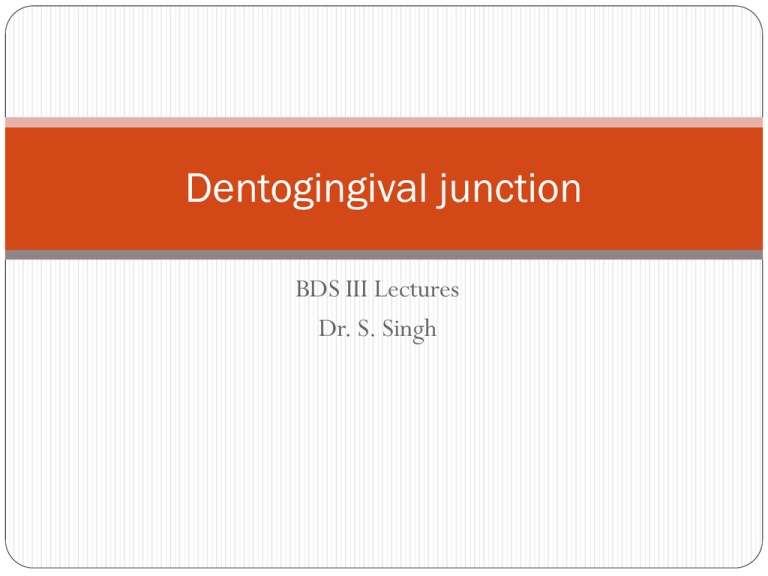
Dentogingival junction BDS III Lectures Dr. S. Singh Three zones of the gingival epithelium Crevicular (or sulcular) epithelium Junctional epithelium Oral epithelium Dentogingival junction Defined as the oral epithelium that extends from the mucogingival junction to the gingival margin where crevicular/sulcular epithelium lines the sulcus At the base of the sulcus connection between gingiva and tooth is mediated with JUNCTIONAL EPITHELIUM Junctional epithelium Derived from REE In health, JE lies against the enamel and extends to the CEJ Base of gingival crevice is the free surface of the JE JE is very fragile and does not form a barrier against probing Cells are large and loosely connected together Attach via hemidesmosomes to the tooth surface, with fewer tonofilaments and desmosomal junctions About 40 cells long from apex to sulcular surface Undergoes constant renewal of cells by cell division, with no keratinized surface epithelium Mild gingival inflammation: In health or mild gingival inflammation, sulcus has a depth of 0.5- 3mm Average of 1.8-2mm Any depth that is greater than 3mm is regarded as PATHOLOGIC (periodontal pocket) The sulcus contains fluid that passes through the JE – purpose of the fluid Defense mechanism of the DGJ Washes the crevice, carrying out shed epithelial cells, leucocytes, bacteria and other debris Plasma proteins may influence epithelial attachment to the tooth Contains antimicrobial agenst (lysozymes) Carries PMN’s, leucocytes, macropahges, immunoglobulins
